 We refer in this work to the metals that can be used as raw material for the manufacture of packaging: tinplate, TFS, aluminum …
DEFINITION
It is called “distinctive elements of metals” each of the parameters of the same in which their characteristics change depending on the needs of use.
DISTINCTIVE ELEMENTS
We classify them in the following families:
1.- Form of supply: Way in which the metal is delivered: It can be in:
– Coils
– Rectangular sheets
– “Escroladas” leaves (Zig-zag cutting of its sides perpendicular to its direction of rolling)
The last two cases can be subdivided into others (bare metal, varnished, printed …)
2.- Dimensions: Includes the 2 or 4 identifying elements according to the form of supply, which are:
– Length: in mm. (only in the case of sheets.) In the case of “escroladas” sheets, the “cutting step” is indicated, not the actual length of the sheet.
– Width: in mm. It can be coil or sheet. In the case of leaves, the smallest dimension is usually indicated as width.
– Metal rolling direction: Specifies in which orientation the sheet has been cut in relation to the lamination. Only in case of rectangular sheets, since in the case of coils it is not necessary to specify it since it is the one of its development and for sheets “escroladas” it is always parallel to the “cutting step”.
– Thickness: in hundredths (or thousandths) of mm.
3.- Type of base metal: It covers the following distinctive elements:
– Quality: Indicates the purity of the base metal and its processing procedure.
So among others for the case of the tin can be indicated:
For its purity:
-Semi-calmed or stabilized steels (Type D, K or P …)
-Works with P content less than 0.015% (Type L. G, V, J, …)
-Works with P content less than 0.02% (Type MR, Z, F …)
-Step type MC
-Special steel: Nitro, nitrided, recarburized …
For its elaboration procedure :
-Cut in ingot
-Colada continues
-Red in bell
-Grilled continued
-Special
-Simple reduction
-Double reduction
-Etc.
– Tempering: Informs the surface hardness of the finished product. The hardness scale and the measuring equipment may depend on the quality of the metal. So for “simple reduction” the durometer is used in the 30T scale, but for “double reduction” it is more accurate to assess the elastic limit.
– Coating: Includes the following distinctive sub-elements:
– Nature : Protective metal placed on its surface and the procedure used for it (tin, chrome …)
– Coating: Amount deposited on each face. In tinplate (tin) it is expressed in gr / m2. For TFS (chromium) in 1/1000 mm. (microns)
– Finishing: Aspect of the faces (Brilliant, matt, silver, stone …)
– Type: Allows to identify by means of a code the tin-iron alloy layer (in the case of tinplate)
– Passivation: It requires the chemical treatment applied to obtain on the surface a very stable layer of tin oxide that favors the varnishing and the welding avoiding the yellowing of the iron. The most common is passivation 311 (cathodic reduction in sadistic bicarbonate)
– Lubrication: Indicates the product used for the oiling of the belt at the outlet of the tinning line. It supposes an additional protection of the product. The most common used oil is dioctyl sebacate (DOS)
4.- Varnishing: Defines the protective varnish according to the product to be packaged. It comprises the following elements:
– Type of varnishing. Indicates how the varnish has been distributed on the surface of each sheet (full, with reserves …)
– Nature of the varnish used on each face (interior and exterior)
– Load : Quantity of varnish applied on each side.
5.- Other characteristics :
– Quality of the material : Specifies whether it is a standard or declassified product.
– Packaging: Includes the following elements:
– Type of paddle (number of skates, senses thereof, …)
– Wrap : (Nude, strapping, with plastic, with paper …)
– Label : All previous data properly coded in addition to the weight of the material are indicated on it.
– Production steel industry
We refer in this work to the metals that can be used as raw material for the manufacture of packaging: tinplate, TFS, aluminum …
DEFINITION
It is called “distinctive elements of metals” each of the parameters of the same in which their characteristics change depending on the needs of use.
DISTINCTIVE ELEMENTS
We classify them in the following families:
1.- Form of supply: Way in which the metal is delivered: It can be in:
– Coils
– Rectangular sheets
– “Escroladas” leaves (Zig-zag cutting of its sides perpendicular to its direction of rolling)
The last two cases can be subdivided into others (bare metal, varnished, printed …)
2.- Dimensions: Includes the 2 or 4 identifying elements according to the form of supply, which are:
– Length: in mm. (only in the case of sheets.) In the case of “escroladas” sheets, the “cutting step” is indicated, not the actual length of the sheet.
– Width: in mm. It can be coil or sheet. In the case of leaves, the smallest dimension is usually indicated as width.
– Metal rolling direction: Specifies in which orientation the sheet has been cut in relation to the lamination. Only in case of rectangular sheets, since in the case of coils it is not necessary to specify it since it is the one of its development and for sheets “escroladas” it is always parallel to the “cutting step”.
– Thickness: in hundredths (or thousandths) of mm.
3.- Type of base metal: It covers the following distinctive elements:
– Quality: Indicates the purity of the base metal and its processing procedure.
So among others for the case of the tin can be indicated:
For its purity:
-Semi-calmed or stabilized steels (Type D, K or P …)
-Works with P content less than 0.015% (Type L. G, V, J, …)
-Works with P content less than 0.02% (Type MR, Z, F …)
-Step type MC
-Special steel: Nitro, nitrided, recarburized …
For its elaboration procedure :
-Cut in ingot
-Colada continues
-Red in bell
-Grilled continued
-Special
-Simple reduction
-Double reduction
-Etc.
– Tempering: Informs the surface hardness of the finished product. The hardness scale and the measuring equipment may depend on the quality of the metal. So for “simple reduction” the durometer is used in the 30T scale, but for “double reduction” it is more accurate to assess the elastic limit.
– Coating: Includes the following distinctive sub-elements:
– Nature : Protective metal placed on its surface and the procedure used for it (tin, chrome …)
– Coating: Amount deposited on each face. In tinplate (tin) it is expressed in gr / m2. For TFS (chromium) in 1/1000 mm. (microns)
– Finishing: Aspect of the faces (Brilliant, matt, silver, stone …)
– Type: Allows to identify by means of a code the tin-iron alloy layer (in the case of tinplate)
– Passivation: It requires the chemical treatment applied to obtain on the surface a very stable layer of tin oxide that favors the varnishing and the welding avoiding the yellowing of the iron. The most common is passivation 311 (cathodic reduction in sadistic bicarbonate)
– Lubrication: Indicates the product used for the oiling of the belt at the outlet of the tinning line. It supposes an additional protection of the product. The most common used oil is dioctyl sebacate (DOS)
4.- Varnishing: Defines the protective varnish according to the product to be packaged. It comprises the following elements:
– Type of varnishing. Indicates how the varnish has been distributed on the surface of each sheet (full, with reserves …)
– Nature of the varnish used on each face (interior and exterior)
– Load : Quantity of varnish applied on each side.
5.- Other characteristics :
– Quality of the material : Specifies whether it is a standard or declassified product.
– Packaging: Includes the following elements:
– Type of paddle (number of skates, senses thereof, …)
– Wrap : (Nude, strapping, with plastic, with paper …)
– Label : All previous data properly coded in addition to the weight of the material are indicated on it.
– Production steel industryRAW MATERIALS
Información TécnicaDISTINCTIVE ELEMENTS OF THE METALS
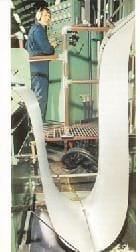
 We refer in this work to the metals that can be used as raw material for the manufacture of packaging: tinplate, TFS, aluminum …
DEFINITION
It is called “distinctive elements of metals” each of the parameters of the same in which their characteristics change depending on the needs of use.
DISTINCTIVE ELEMENTS
We classify them in the following families:
1.- Form of supply: Way in which the metal is delivered: It can be in:
– Coils
– Rectangular sheets
– “Escroladas” leaves (Zig-zag cutting of its sides perpendicular to its direction of rolling)
The last two cases can be subdivided into others (bare metal, varnished, printed …)
2.- Dimensions: Includes the 2 or 4 identifying elements according to the form of supply, which are:
– Length: in mm. (only in the case of sheets.) In the case of “escroladas” sheets, the “cutting step” is indicated, not the actual length of the sheet.
– Width: in mm. It can be coil or sheet. In the case of leaves, the smallest dimension is usually indicated as width.
– Metal rolling direction: Specifies in which orientation the sheet has been cut in relation to the lamination. Only in case of rectangular sheets, since in the case of coils it is not necessary to specify it since it is the one of its development and for sheets “escroladas” it is always parallel to the “cutting step”.
– Thickness: in hundredths (or thousandths) of mm.
3.- Type of base metal: It covers the following distinctive elements:
– Quality: Indicates the purity of the base metal and its processing procedure.
So among others for the case of the tin can be indicated:
For its purity:
-Semi-calmed or stabilized steels (Type D, K or P …)
-Works with P content less than 0.015% (Type L. G, V, J, …)
-Works with P content less than 0.02% (Type MR, Z, F …)
-Step type MC
-Special steel: Nitro, nitrided, recarburized …
For its elaboration procedure :
-Cut in ingot
-Colada continues
-Red in bell
-Grilled continued
-Special
-Simple reduction
-Double reduction
-Etc.
– Tempering: Informs the surface hardness of the finished product. The hardness scale and the measuring equipment may depend on the quality of the metal. So for “simple reduction” the durometer is used in the 30T scale, but for “double reduction” it is more accurate to assess the elastic limit.
– Coating: Includes the following distinctive sub-elements:
– Nature : Protective metal placed on its surface and the procedure used for it (tin, chrome …)
– Coating: Amount deposited on each face. In tinplate (tin) it is expressed in gr / m2. For TFS (chromium) in 1/1000 mm. (microns)
– Finishing: Aspect of the faces (Brilliant, matt, silver, stone …)
– Type: Allows to identify by means of a code the tin-iron alloy layer (in the case of tinplate)
– Passivation: It requires the chemical treatment applied to obtain on the surface a very stable layer of tin oxide that favors the varnishing and the welding avoiding the yellowing of the iron. The most common is passivation 311 (cathodic reduction in sadistic bicarbonate)
– Lubrication: Indicates the product used for the oiling of the belt at the outlet of the tinning line. It supposes an additional protection of the product. The most common used oil is dioctyl sebacate (DOS)
4.- Varnishing: Defines the protective varnish according to the product to be packaged. It comprises the following elements:
– Type of varnishing. Indicates how the varnish has been distributed on the surface of each sheet (full, with reserves …)
– Nature of the varnish used on each face (interior and exterior)
– Load : Quantity of varnish applied on each side.
5.- Other characteristics :
– Quality of the material : Specifies whether it is a standard or declassified product.
– Packaging: Includes the following elements:
– Type of paddle (number of skates, senses thereof, …)
– Wrap : (Nude, strapping, with plastic, with paper …)
– Label : All previous data properly coded in addition to the weight of the material are indicated on it.
– Production steel industry
We refer in this work to the metals that can be used as raw material for the manufacture of packaging: tinplate, TFS, aluminum …
DEFINITION
It is called “distinctive elements of metals” each of the parameters of the same in which their characteristics change depending on the needs of use.
DISTINCTIVE ELEMENTS
We classify them in the following families:
1.- Form of supply: Way in which the metal is delivered: It can be in:
– Coils
– Rectangular sheets
– “Escroladas” leaves (Zig-zag cutting of its sides perpendicular to its direction of rolling)
The last two cases can be subdivided into others (bare metal, varnished, printed …)
2.- Dimensions: Includes the 2 or 4 identifying elements according to the form of supply, which are:
– Length: in mm. (only in the case of sheets.) In the case of “escroladas” sheets, the “cutting step” is indicated, not the actual length of the sheet.
– Width: in mm. It can be coil or sheet. In the case of leaves, the smallest dimension is usually indicated as width.
– Metal rolling direction: Specifies in which orientation the sheet has been cut in relation to the lamination. Only in case of rectangular sheets, since in the case of coils it is not necessary to specify it since it is the one of its development and for sheets “escroladas” it is always parallel to the “cutting step”.
– Thickness: in hundredths (or thousandths) of mm.
3.- Type of base metal: It covers the following distinctive elements:
– Quality: Indicates the purity of the base metal and its processing procedure.
So among others for the case of the tin can be indicated:
For its purity:
-Semi-calmed or stabilized steels (Type D, K or P …)
-Works with P content less than 0.015% (Type L. G, V, J, …)
-Works with P content less than 0.02% (Type MR, Z, F …)
-Step type MC
-Special steel: Nitro, nitrided, recarburized …
For its elaboration procedure :
-Cut in ingot
-Colada continues
-Red in bell
-Grilled continued
-Special
-Simple reduction
-Double reduction
-Etc.
– Tempering: Informs the surface hardness of the finished product. The hardness scale and the measuring equipment may depend on the quality of the metal. So for “simple reduction” the durometer is used in the 30T scale, but for “double reduction” it is more accurate to assess the elastic limit.
– Coating: Includes the following distinctive sub-elements:
– Nature : Protective metal placed on its surface and the procedure used for it (tin, chrome …)
– Coating: Amount deposited on each face. In tinplate (tin) it is expressed in gr / m2. For TFS (chromium) in 1/1000 mm. (microns)
– Finishing: Aspect of the faces (Brilliant, matt, silver, stone …)
– Type: Allows to identify by means of a code the tin-iron alloy layer (in the case of tinplate)
– Passivation: It requires the chemical treatment applied to obtain on the surface a very stable layer of tin oxide that favors the varnishing and the welding avoiding the yellowing of the iron. The most common is passivation 311 (cathodic reduction in sadistic bicarbonate)
– Lubrication: Indicates the product used for the oiling of the belt at the outlet of the tinning line. It supposes an additional protection of the product. The most common used oil is dioctyl sebacate (DOS)
4.- Varnishing: Defines the protective varnish according to the product to be packaged. It comprises the following elements:
– Type of varnishing. Indicates how the varnish has been distributed on the surface of each sheet (full, with reserves …)
– Nature of the varnish used on each face (interior and exterior)
– Load : Quantity of varnish applied on each side.
5.- Other characteristics :
– Quality of the material : Specifies whether it is a standard or declassified product.
– Packaging: Includes the following elements:
– Type of paddle (number of skates, senses thereof, …)
– Wrap : (Nude, strapping, with plastic, with paper …)
– Label : All previous data properly coded in addition to the weight of the material are indicated on it.
– Production steel industry

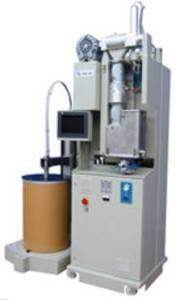
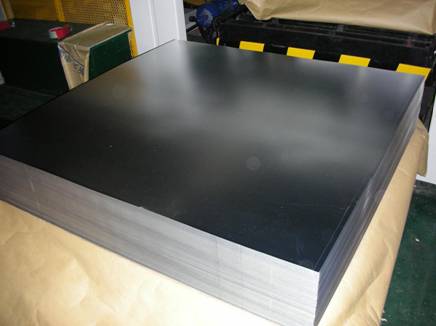
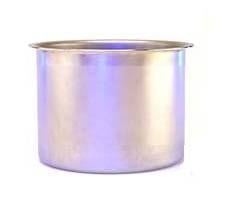
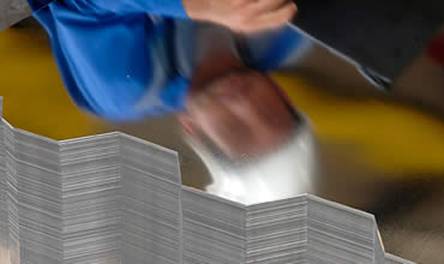



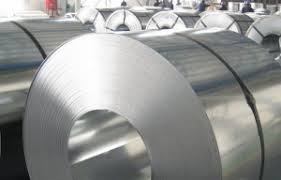




0 Comments